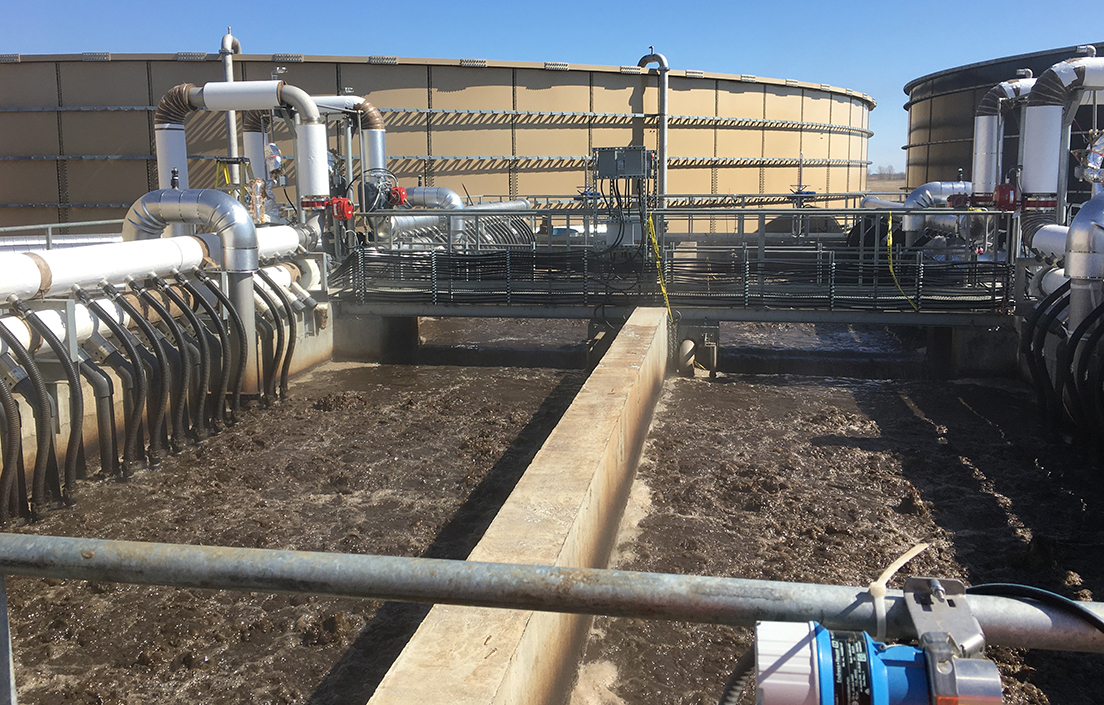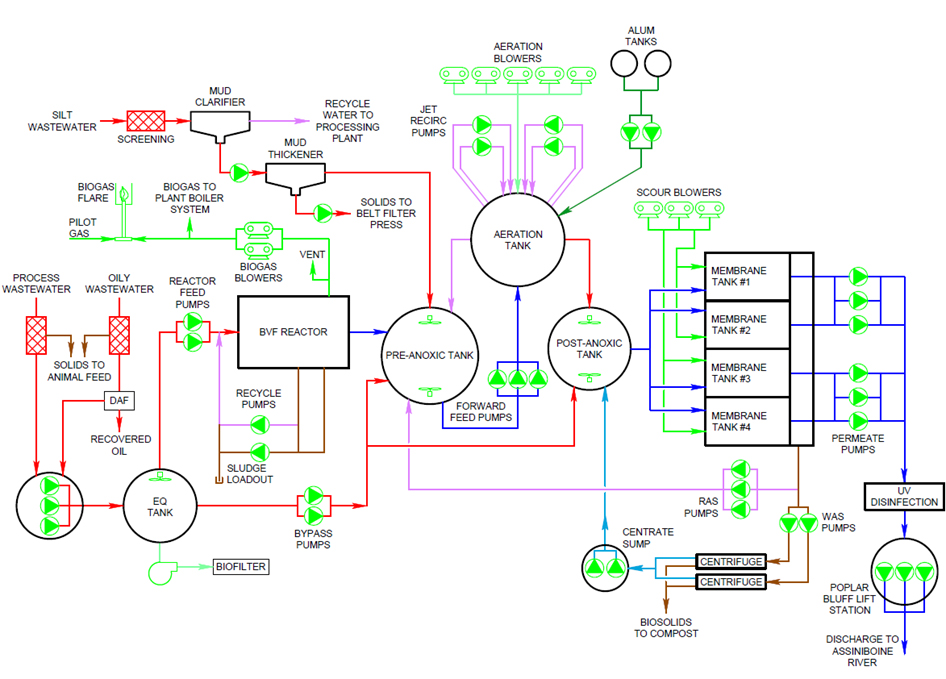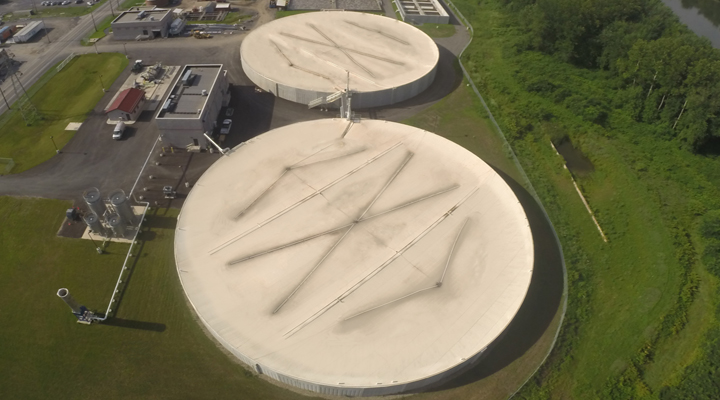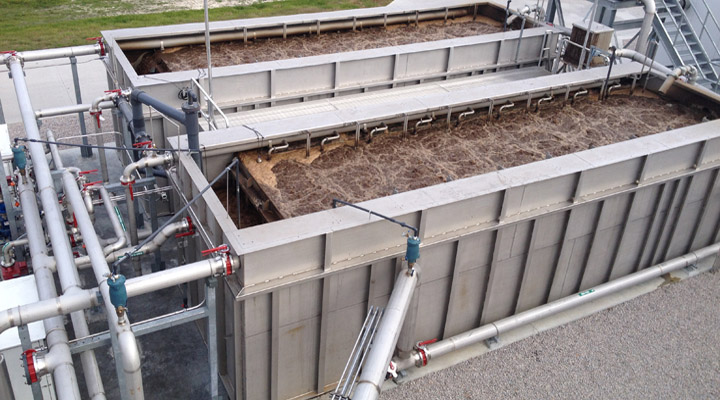
In 2018, Simplot conducted a major expansion of its Portage la Prairie plant in Canada, in order to produce more than 600 million (MM) pounds of frozen french fries for the restaurant industry every year. The expansion more than doubled the facility’s size and production capacity, and resulted in a significant increase in wastewater production.
Challenge
Simplot needed to expand the on-site treatment system to handle the increase in wastewater from the expanded production plant. At the same time the company wanted to improve effluent quality such that, to meet sustainability goals, final effluent could be safely discharged directly to the Assiniboine River as opposed to discharging to the public utility. This required a system designed to achieve BNR to meet tight limits on ammonia, total nitrogen, and total phosphorus.
By The Numbers
Solution
Prior to the upgrade, the Simplot treatment system included a pre-treatment system comprised of a low-rate anaerobic ADI-BVF® reactor and a sulfide oxidation tank, and the final effluent was discharged to the local public utility for polishing.
Simplot partnered with ADI Systems, an Evoqua company, to upgrade and expand the primary and biological treatment systems. Primary treatment was upgraded by installing clarifiers to separate mud from the silt water, a dissolved air flotation (DAF) system to pretreat the oily water generated from the expanded production plant, and an equalization (EQ) tank to attenuate the flow of whitewater. These streams are combined and discharged to a new influent EQ tank, and the majority of the combined wastewater is treated in the existing ADI-BVF® reactor, which anaerobically digests the organics and solids in the wastewater and generates a substantial amount of biogas with minimal energy input. To generate final effluent suitable for surface water discharge, the MBR treats the combination of clarified silt water, ADI-BVF® reactor effluent, and wastewater bypass from the EQ tank. The MBR system uses submerged hollow fiber membranes to retain solids in the system and generate effluent free of suspended solids. In addition to achieving BNR to reduce total nitrogen, chemical phosphorus removal is conducted within the MBR system, and MBR permeate is polished with a UV disinfection system, which generates a final effluent that meets all direct discharge requirements.
" Expanding our wastewater treatment system to meet very stringent nitrogen and phosphorus limits for direct discharge to the Assiniboine River while undergoing a significant increase in french fry production at our plant demanded a complex preliminary treatment process, along with an advanced membrane bioreactor system to work with our existing BVF anaerobic reactor. "
Results
The upgraded system has the capacity to treat up to 3.3 MGD of wastewater. The resulting high quality final effluent meets tight discharge limits for BOD (< 25 mg/l), TSS (< 25 mg/l), NH3-N (< 92 lb/d), TN (< 15 mg/l), TP (< 1 mg/l), and fecal coliform, allowing Simplot to safely discharge final effluent to the Assiniboine River. The solids from the ADI-BVF® reactor are composted or land-applied as liquid fertilizer, aligning with Simplot’s sustainability goal of no waste to landfill from processing facilities.

Keys to Success
There were three main ingredients that made this project successful:
-
Effective pretreatment of different wastewater streams prior to biological treatment
-
Utilize existing low-rate anaerobic BVF reactor to serve as the system workhorse
-
Membrane Bioreactor (MBR) system designed for biological nutrient removal (BNR) to meet stringent limits for direct discharge to the environment
" Schedule was tight with seasonal winter conditions being a significant factor. Evoqua was able to deliver this complex design-build project on time and on budget with a system that consistently meets all strict discharge limits, fulfilling Simplot’s sustainability goals. "


